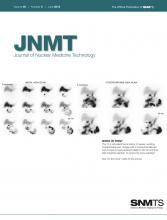
Donna Richmond, BA, RCC, CPC
You may have heard about the new ICD-10-CM diagnosis and procedure coding system. ICD-10 is the short name for the International Classification of Diseases, Tenth Revision, which was designed to promote international comparability in the collection, processing, classification, and presentation of mortality statistics. It also provides a format for reporting causes of death on the death certificate. In a proposed rule issued in early April, the Department of Health and Human Services proposed changing the effective date of ICD-10 to October 1, 2014 (from the originally set date of October 1, 2013).
For many years now, the rest of the world has used ICD-10, and the United States began using ICD-10 in 1999 only for mortality reporting on death certificates. Because ICD-10 did not meet our health-care system's need for morbidity reporting, we continued to use the 30-year-old ICD-9-CM (clinical modification) system for health insurance claims.
However, ICD-9-CM is outdated and has no more room to grow. As a result, the National Centers for Health Statistics developed a clinical modification of ICD-10 to replace ICD-9-CM. In addition, the Centers for Medicare and Medicaid Services developed ICD-10-PCS, a new “procedure classification system” that hospitals will use to code procedures performed on inpatients. Procedures billed by physicians or hospital outpatient departments will continue to be coded with Current Procedural Terminology.
Only entities covered under the Health Insurance Portability and Accountability (HIPAA) Act (usually known as HIPAA-covered entities) are required to adopt ICD-10. Non–HIPAA-covered entities (such as Worker's Compensation programs, property and casualty insurance plans, and prison health systems) are not required to switch to ICD-10-CM. Providers who submit claims to non-HIPAA entities may have to continue to use ICD-9-CM for non–HIPAA-covered payers and ICD-10-CM for those covered under HIPAA.
BENEFITS OF NEW SYSTEM
One of the biggest pluses of the new system is that it contains roughly 69,000 codes, offering greater specificity in coding than the current ICD-9-CM system, which includes approximately 14,000 codes. Not only does the new system include updated medical terminology and classification of diseases, but it also offers room to grow—something that ICD-9-CM no longer allows.
Use of ICD-10-CM will require more specific physician documentation of diagnoses, which will enable coders to choose the most precise and appropriate code. As an example, there are now 8 codes to choose from for a pathologic fracture. In ICD-10-CM, there will be almost 900.
ICD-10 documentation will need to specify the location of the fracture; whether the pathologic fracture is related to osteoporosis, neoplastic disease, or other disease; and whether it is an initial or subsequent encounter. If it is a subsequent encounter, further description is required (i.e., for routine healing, for delayed healing, for nonunion, for malunion, or for sequelae).
The ICD-10-CM system also includes laterality as part of the code description, combination codes for disease and manifestation, inclusion of trimester for obstetric diagnoses, and differentiation between intraoperative and postoperative complications.
CHANGES FOR NUCLEAR MEDICINE
The primary impact on nuclear medicine will be the need for greater specificity in documentation. Nuclear medicine staff will need to be trained to request and document the most specific clinical indication when a test is ordered. Physicians performing and interpreting those tests must document diagnoses with as much detail (i.e., specificity) as possible so that coders can choose the most appropriate options. Coders may need training in anatomy and physiology to better understand the choices available.
There will continue to be nonspecific codes in ICD-10-CM; however, it is believed that as new policies are written by payers, those nonspecific codes may become nonpayable.
To facilitate the transition to ICD-10-CM, some technical changes related to claims submission and processing are required. Specifically, January 1, 2012, was the go-live date for transaction standard 5010 (an update to version 4010), which applies to electronic transactions such as claims and payments. Even though the effective date has come and gone, the Centers for Medicare and Medicaid Services gave providers a grace period for using the 5010—until June 30. Electronic claims submitted without conforming to 5010 will not be processed.
CODING PRIMER
Hospital health information management staff also must relearn procedure coding for inpatients. To choose an ICD-10-PCS code, coders must consult specific charts that contain multiple options and “build” a specific code by choosing the right element. An example of the chart for nuclear medicine therapy is provided in Table 1.
Example Chart for Nuclear Medicine Therapy
Using the chart above, in ICD-10-PCS, thyroid ablation using 131I would be coded as CW7GGZZ. Under the current system, using ICD-9, this procedure would be coded as 92.29—other radiotherapeutic procedure. Thus, in ICD-10-PCS, the specific therapy is documented instead of the generic “other.”
The greater detail and specificity in ICD-10-CM and ICD-10-PCS, although benefiting billing and payment, are not just for those uses. They will also allow for much better data for measuring the efficacy of care, conducting research and developing clinical trials, and setting health policy. Tracking of new diseases worldwide will be easier when we all are using the same classification system.
Increasing specificity in documentation not only will make you prepared for ICD-10 (whenever it starts) but also will help now under ICD-9.







